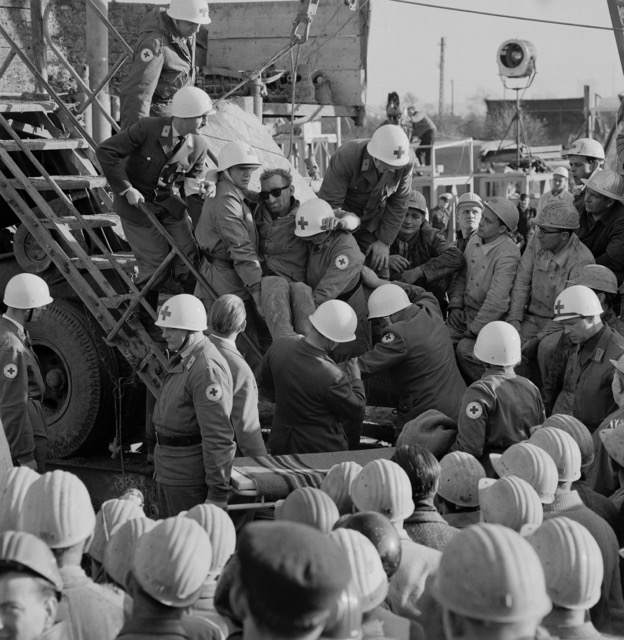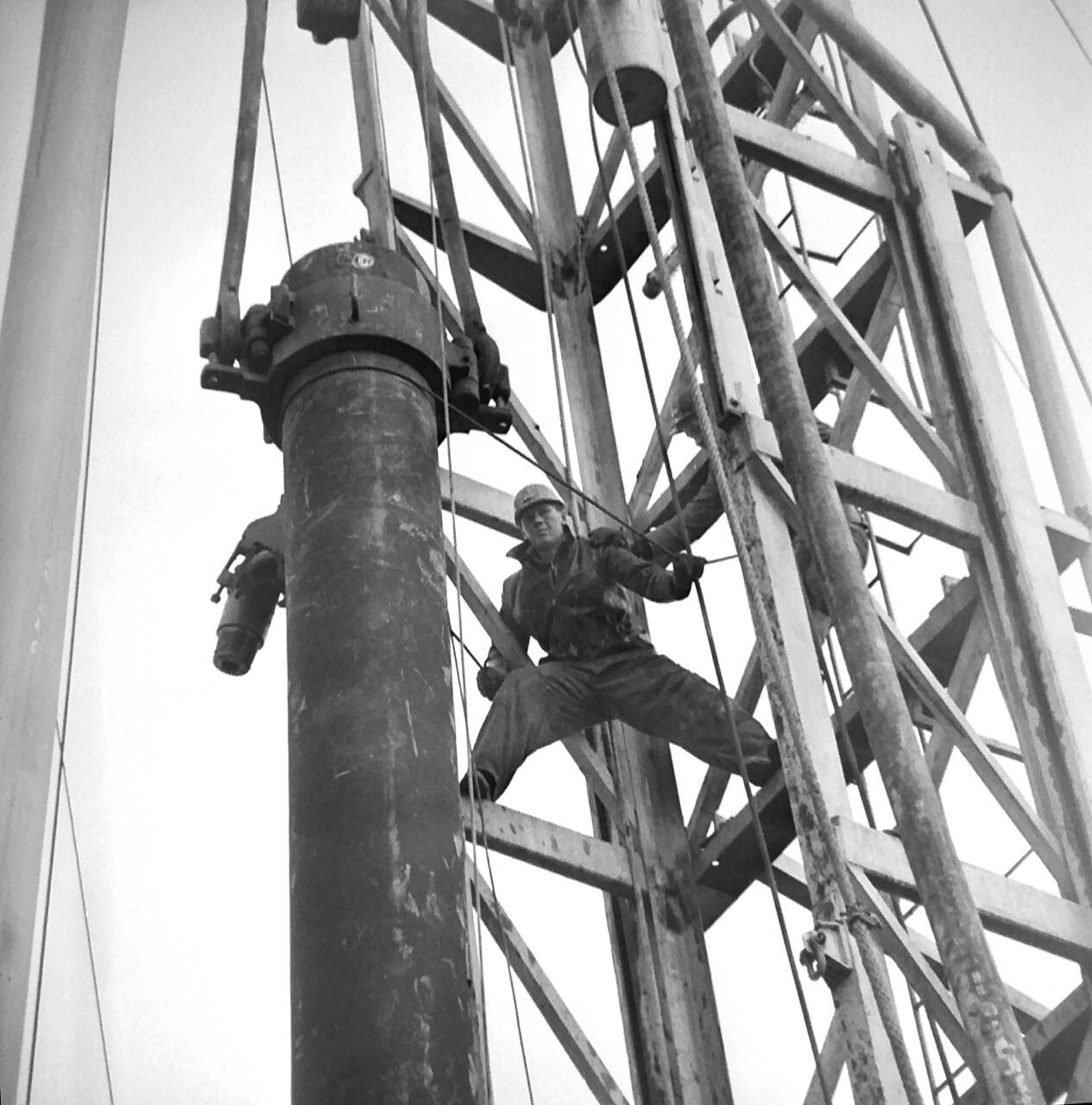Joachim Giesel, Rettung des Hermann Lübke nach dem Grubenunglück in Lengede, Lengede, 7. November 1963.
On October 24, 1963, at around 8 p.m., the sealing of a sewage pond in the Lengede-Broistedt mine bursts, flooding the associated tunnel with 500,000m3 of sludge water and burying 129 people. In the first two days, 89 of them managed to free themselves or were rescued by drilling. All the others are declared dead. Nevertheless, further search drillings are carried out until, on the morning of November 3, knocking noises are heard from the depths – a glimmer of hope. Three days later, Joachim Giesel arrives, unclear about the duration of his stay and the outcome of the operation. One night spent in the car later, he experienced what he had thought impossible: after 336 hours in absolute darkness and without food, eleven more miners were rescued alive. Giesel’s photo is a moving illustration of the most spectacular rescue operation in German mining history: We look over the miners’ helmets at the dramatic moment. The visibly weakened miner Hermann Lübke, whose eyes are protected from the glaring sunlight by dark glasses, is lifted down the gigantic rescue drill by paramedics via a staircase, where a stretcher is ready to carry him away. A cameraman from NDR can be seen in the background – it is the first rescue operation to be reported live on German television. The fact that 100 out of 129 people survive the accident goes down in the annals of the Federal Republic of Germany as the “Miracle of Lengede”.
Jonathan Fulda

